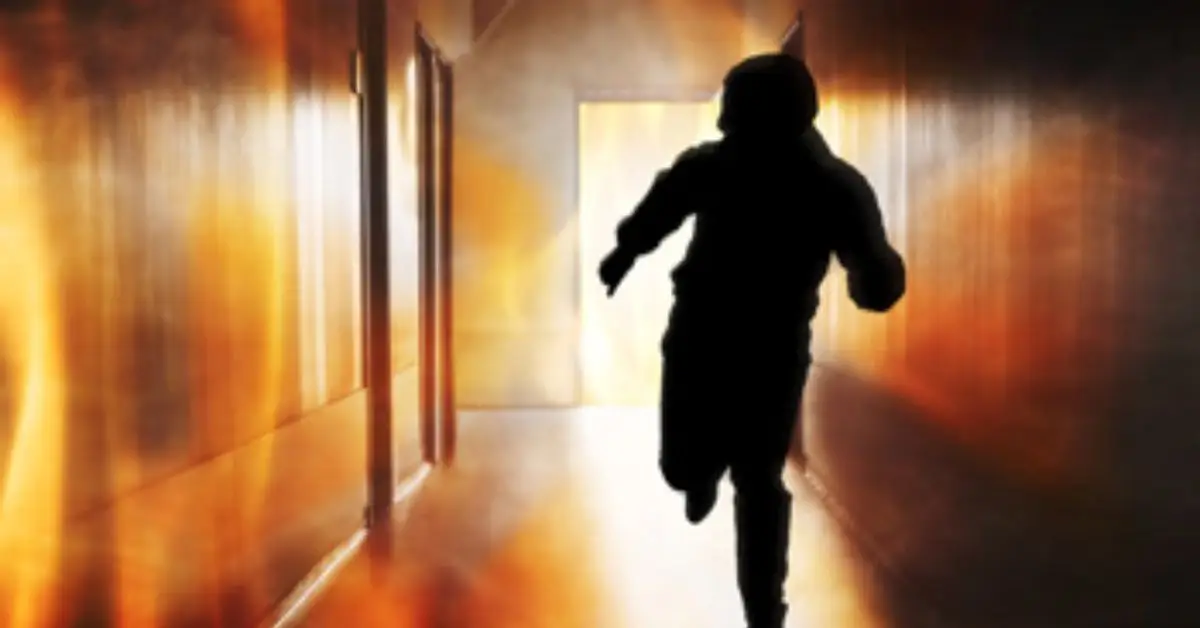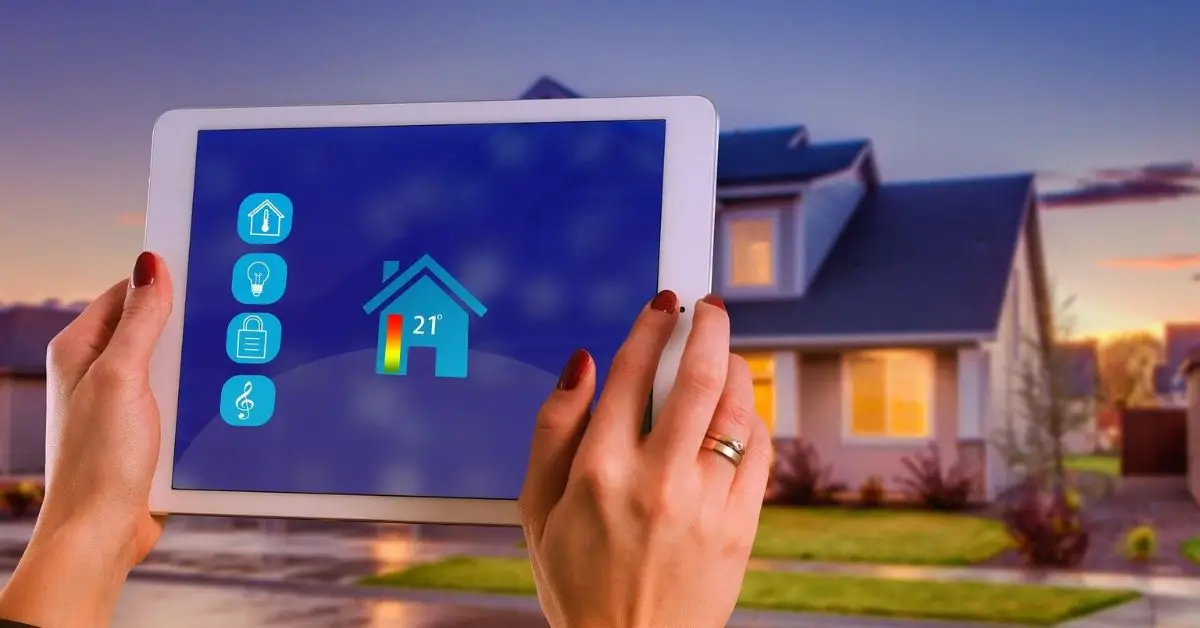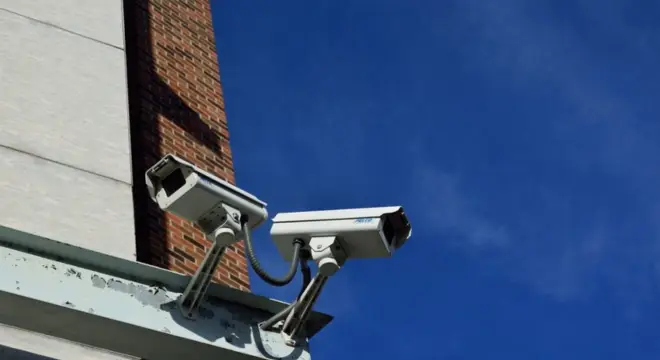Don’t Wait for Smoke: 7 Fire Safety Habits Every Family Needs Now
It’s easy to think a house fire is something that happens to other people. I used to believe that too—until I heard about a family who lost everything in under five minutes. No warning. No time. Just smoke, panic, and the kind of regret you never forget.
Most of us know we should have a fire escape plan. Maybe even a smoke alarm. But here’s the truth: knowing isn’t preparing. And in a real emergency, that gap can cost more than your belongings—it can cost your family.
This isn’t another checklist full of common sense tips. What you’ll find here are smart, practical steps. The kind that make the difference when everything goes wrong. I’ve pulled them from real firefighters, safety experts, and families who’ve actually lived through a home fire.
Some are fast fixes. Others take a little planning. All of them are worth your time.
So ask yourself: if you had only 90 seconds to get out, would you be ready?
Let me know how prepared you feel right now—or if you’re starting from scratch. You’re not the only one.
Understand the Real Risk — Fires Ignite Fast
Most people assume they’ll have time to react in a fire. That they’ll smell the smoke, grab what matters, and walk out safely. But here’s what the data says: you might have less than two minutes to escape once the smoke alarm sounds. That’s not a guess—that’s straight from the National Fire Protection Association (NFPA).
In today’s homes, synthetic materials, open layouts, and lightweight construction all contribute to fires spreading faster than they did 30 years ago. Furniture burns hotter. Rooms flash over in seconds. And those “few extra minutes” you’re counting on? They’re not coming.
Even more dangerous is the idea that fire will wake you up. It won’t. According to the Red Cross, most deadly fires happen between 11 p.m. and 7 a.m., when people are asleep. And without a working smoke alarm, you may never wake up at all.
There’s also the stuff we rarely think about—like dryer lint, overheated chargers, overloaded outlets. Fires don’t only come from stoves or candles. A phone charging on your couch can light up the entire room if left too long or plugged into a cheap cord.
The risk is real. And more common than most of us want to admit.
The smart move? Accept how little time you truly have—and start preparing like it matters.
How close is your nearest smoke alarm? Have you ever timed how fast you can reach the door in the dark? Think about it now, before you have to find out the hard way.
Smart Detection — Beyond Basic Smoke Alarms
You probably have a smoke alarm. Maybe two. But here’s the question: are they the right kind, in the right places, and working when it actually counts?

Most homes have outdated or poorly placed alarms. Some are missing entirely in key rooms like basements, attics, or hallways outside bedrooms. Others are disconnected because of that one time it went off while cooking. Sound familiar?
Here’s what smart detection actually looks like:
- Interconnected smoke alarms that all go off together, so no matter where the fire starts, the whole house hears it.
- Voice alert systems for children and seniors, who often don’t wake up to standard beeping. Studies show kids sleep through alarms unless there’s a voice involved.
- Strobe or vibrating alarms for anyone with hearing loss. AARP recommends these for multi-generational households.
- Proper placement—not near windows or vents (which can interfere), and definitely not just in the kitchen. The NFPA says you need one inside every bedroom, outside sleeping areas, and on every level of your home.
- And then there’s maintenance. Smart preparation means setting a reminder to test alarms monthly, changing the batteries twice a year, and replacing the entire unit every 10 years—even if it still beeps.
Tech is also catching up. Some smart detectors now connect to your phone and alert you even when you’re not home. That matters if you’ve got pets, kids at school, or elderly parents living alone.
Smoke alarms are essential, but don’t overlook the silent threats. Carbon monoxide and natural gas leaks can be just as deadly. Learn how to protect your family from these invisible hazards in our full guide on CO and natural gas safety.
Fire doesn’t care about good intentions. It responds to preparation. And in this case, your first line of defense is sound—literally.
When’s the last time you tested your smoke alarms? Be honest. And if you had to find one right now in the dark, could you? That’s your sign.
Fire Escape Planning — Actually Smart
Let’s be honest: most fire escape plans live in our heads. Or worse, they were talked about once and never practiced again.

But a plan that’s only theoretical isn’t a plan. It’s a wish.
If you want your family to respond fast—and survive—your fire escape plan needs to be real, practiced, and smart. That means going beyond the basic “meet outside” idea.
Here’s how to do it right:
- Map your home with two exit routes from every room. It doesn’t have to be fancy—a pen and paper sketch works.
- Practice in real conditions. Not just in daylight when everything’s calm. Try it at night. Turn off the lights. Pretend a hallway is blocked. Make it real.
- Teach your kids how to unlock doors and windows themselves. Many young kids freeze or fumble because they’ve never actually opened that latch or screen.
- Designate a clear meeting spot outside your home. Not “the front yard,” but something specific and easy to remember—like the mailbox or the neighbor’s driveway.
Also, think about those who might need extra help. If you have older parents at home or very young kids, assign someone to assist them during practice runs. And yes—you should practice this at least twice a year. It only takes ten minutes, and it could save your life.
The smartest families don’t assume they’ll rise to the occasion. They rehearse until they don’t have to think.
If your smoke alarm went off right now, would everyone in your house know where to go? Would they panic or move? That answer tells you how ready you really are.
Smart Tools in Smart Places
Fire safety isn’t just about alarms and exits. It’s also about having the right tools—and knowing exactly where they are when seconds count.
You don’t need to turn your home into a fire station. But a few smart choices can make the difference between a close call and a catastrophe.
Fire Extinguishers: One Is Not Enough
A single extinguisher under the kitchen sink won’t cut it. You need multi-purpose (ABC-rated) extinguishers in at least three key zones:
- Kitchen (where most fires start)
- Garage or utility area
- Upstairs hallway or near bedrooms
And it’s not just about placement. You have to know how to use it. Firefighters teach the PASS method: Pull the pin, Aim low, Squeeze the handle, Sweep side to side. Simple—but most people forget in a panic.
Fire Escape Ladders: Not Just for Apartments
If your home has a second story, you need a collapsible ladder in each upstairs bedroom. Store it where it’s instantly reachable, and practice deploying it. It feels awkward at first—but that’s the point of practicing now.
Smart Detectors and Sprinkler Add-ons
Some newer smart smoke detectors come with app alerts, voice prompts, and even emergency lighting to guide you out. Others pair with home sprinkler systems—yes, they exist for residential homes now. According to the NFPA, sprinklers can reduce fire damage by up to 80 percent.
Flashlights and Shoe Storage
This one’s often missed: keep a flashlight and shoes near your bed. Fires often knock out power, and stepping on glass barefoot is more common than people realize.
The tools that save lives aren’t the ones buried in a closet. They’re the ones you can grab, use, and trust—under pressure.
Quick gut check: Could you find and operate a fire extinguisher right now, in less than 10 seconds? If not, you’ve got work to do—and now’s the perfect time to fix it.
Smart Habit Shifts — Daily Actions That Matter
Most fires don’t come from freak accidents. They come from routine habits that seem harmless—until they’re not. What makes your home safer isn’t just the alarms and gear. It’s how you live in it, day to day.
Here are the small but high-impact changes that make a difference:
Never Leave the Kitchen Unattended
Cooking fires are the number one cause of home fires. And most of them happen because someone walked away—just for a minute. If you have to leave, turn off the burner. Use a kitchen timer or smart speaker alert if you tend to forget.
Be Picky About Power
Overloaded outlets, daisy-chained power strips, and cheap chargers are silent fire hazards. Unplug appliances when not in use, especially in older homes. And if a cord feels warm or starts sparking—replace it immediately. No shortcuts.
Respect Space Heaters and Fireplaces
Keep a strict 3-foot clearance around heaters and anything flammable—curtains, blankets, furniture. That includes festive candles and holiday decorations. One knocked-over candle or string of old lights can torch a room fast.
Don’t Charge Overnight—Especially on Beds or Sofas
Lithium-ion batteries heat up when charging. Combine that with a soft surface like a pillow or couch, and you’ve got a smoldering fire risk. Charge phones on hard surfaces only—and avoid overnight charging if possible.
Fire risks spike during certain times of year—especially around major holidays when decorations, gatherings, and distractions are high. If you haven’t already, make sure you’re also prepped for seasonal threats like fireworks and break-ins by reading our 4th of July safety alert on fire and theft prevention.
Laundry Room Discipline
Clean the dryer lint trap after every load. Lint is extremely flammable, and dryer fires are more common than most people think.
None of this takes long. None of it costs much. But these small, consistent habits are what separate safe homes from stories that end in loss.
Which of these do you already do? And which ones have you let slide? Fire prevention starts in the details—and this is the easiest place to begin.
Smart Home Hardening and Maintenance
Most people focus on what to do inside the house during a fire. But real protection starts long before any alarm goes off—in how your home is built, maintained, and prepared to resist fire in the first place.

These aren’t high-tech upgrades. They’re smart, often-overlooked moves that make your home tougher and safer.
Schedule an Annual Heating + Chimney Check
Furnaces, space heaters, and wood stoves need yearly inspections. Chimneys, especially if you burn wood, can build up creosote—a sticky, flammable residue that causes thousands of house fires every year. Have a pro clean it before winter hits.
Watch for Electrical Red Flags
Old wiring, flickering lights, warm outlets, and tripped breakers aren’t minor annoyances—they’re early fire warnings. Get an electrician in if you notice any of these. Don’t patch it with duct tape or cross your fingers.
Vent and Roof Prep for Wildfire-Prone Areas
If you live anywhere near wildfire zones (even suburbs), embers can enter through vents or gaps in your eaves. Simple upgrades like metal mesh screens on vents or ember-resistant roofing can keep windblown sparks from getting inside. Fire Safe Marin recommends these for both rural and urban homes.
Clear the Zone Around Your House
Create defensible space by clearing dry leaves, stacked wood, or dead plants at least five feet from your foundation. Even if you’re not in wildfire country, this keeps fire from spreading fast outside your home.
Safety doesn’t always start with gadgets—it can begin with the way you design and present your home. Even small details like your nameplate can influence energy, safety, and visibility for first responders. Explore these Vastu tips for name plates to align security with smart home design.
Use Fire-Smart Landscaping
Surprisingly, some plants burn faster than others. Swap out fast-burning shrubs (like juniper or pine) for slower-burning alternatives like hardwoods or succulents. It’s a long-term shift, but one that adds beauty and safety.
Home hardening isn’t about fear. It’s about quiet, confident prevention—the kind you don’t see every day, but that changes everything when it matters.
When’s the last time you walked around your house and looked at it like a fire inspector would? Start doing that once a year. It’ll change what you notice—and how you prepare.
What to Do If Fire Happens — A Smart Response
You can have the best alarms, tools, and plans—but when a fire actually starts, what you do in the next 30 seconds matters just as much as everything you did before.
Here’s what a smart, practiced response looks like.
Check Doors Before Opening
If there’s smoke in the hallway, don’t rush out. First, touch the door with the back of your hand. If it’s hot, don’t open it. Use your second exit plan.
If it’s cool, open slowly—but stay low. Smoke rises, and the cleaner air is near the floor.
Stay Low and Move Fast
Crawl if there’s smoke. Stay below the heat and gases, which can be deadly before flames even reach you. Keep one hand on the wall if visibility is poor.
Close Doors Behind You
Closing doors behind you as you exit can slow the spread of fire. It buys you—and firefighters—time.
If You’re Trapped
Seal cracks around doors with a towel or clothing to keep smoke out. Call 911 immediately, and signal from a window with a flashlight, phone light, or bright cloth.
Never hide in a closet or under a bed. Stay where rescuers can see you.
Clothing on Fire? Stop-Drop-Roll
Still works. Don’t run. Stop where you are, drop to the ground, cover your face, and roll until the flames go out. Teach kids this early—it needs to be instinct.
Don’t Go Back Inside
Even if it’s for a pet, phone, or something valuable. Fires move fast, and smoke can knock you out in seconds. Once you’re out, stay out.
This is the part no one wants to think about. But this is the part that saves lives when things go wrong.
Have you ever walked through these steps with your family? Not just talked about them—but actually practiced? Because what you do in panic is what you practiced in calm.
After the Fire — Smart Recovery and Prevention
Once the fire is out, the danger might be over—but the impact isn’t. The hours and days that follow can be chaotic, emotional, and overwhelming. A smart recovery plan won’t fix the loss, but it can help you regain control faster and protect you in the future.
Get to a Safe Space and Stay Out
First: do not go back inside, no matter how small the fire looked. Wait for firefighters to give you the all-clear. Even after the flames are gone, there could be structural damage, toxic air, or hidden embers.
Meet First Responders with Clarity
If you followed your plan, your family should already be at your meeting spot. Let responders know if everyone is accounted for—or if someone might still be inside. Stay calm, and give as much detail as you can.
Contact Your Insurance Right Away
Once it’s safe, contact your insurance provider. Take photos of the damage. Don’t throw away anything until it’s documented. If you’re displaced, ask your insurer what emergency assistance you qualify for.
Emotional Recovery Matters Too
Even small fires can leave trauma, especially for children. Sleep disturbances, fear of alarms, or hypervigilance are all common reactions. Talk about it openly. Don’t downplay it. Consider short-term counseling if needed.
Learn From the Experience
Once things settle, take time to review what worked—and what didn’t.
- Did the alarm go off in time?
- Did you have the tools you needed?
- Was the exit plan clear under pressure?
Update your plan based on real experience, not assumptions.
Replace What You Lost—Including Trust in Your Plan
Rebuild your fire kit. Check expiration dates on gear. Walk your home with fresh eyes. And most of all, don’t treat the fire as a one-time event. Treat it as a turning point.
Some families never rebuild. Others rebuild smarter, safer, and stronger. The difference is often in how they recover.
If a fire hit your home tomorrow, would you know what to do the day after? If the answer is no, now is the time to figure it out—not later.
Final Checklist and Wrap-Up
Fire safety doesn’t have to be overwhelming. If you’ve made it this far, you already know more—and care more—than most people ever will. Now it’s about taking action, one smart step at a time.
Here’s a quick recap of the 7 smart ways to prepare for a home fire:
- Understand the Real Risk: Fires move fast. You may have less than 2 minutes to escape.
- Upgrade Your Detection: Interconnected smoke alarms. Voice alerts. Smart placement. Monthly testing.
- Create a Real Escape Plan: Two exits from every room. Night-time drills. Teach kids how to unlock windows.
- Put Smart Tools in the Right Places: Fire extinguishers. Escape ladders. Flashlights by the bed. Know how to use everything.
- Change Your Daily Habits: Stay near the stove. Clear the lint trap. Charge safely. Respect electrical limits.
- Harden Your Home: Annual inspections. Vent screens. Fire-safe landscaping. Defensible space.
- Know What to Do if It Happens: Feel doors. Crawl low. Never re-enter. Seal cracks if trapped. Call 911 early.
- And one bonus step: Review, reflect, and update after every close call—whether it’s a near-miss or a real event.
Fire doesn’t give you time to think. But preparation does.
You don’t need to do everything today. But pick one thing—and do it now. Maybe it’s testing your alarms. Maybe it’s sketching your escape plan. Maybe it’s just talking to your family tonight over dinner.
What’s the one step you’re going to take this week? Let me know in the comments—or better yet, share this with someone who hasn’t thought about any of this yet.
Because the smartest fire plans don’t just stay in your head. They live in your habits, your home, and your people.
Want to learn more about protecting your home the smart way? Visit Build Like New for practical guides, expert tips, and real-world safety advice.
Disclaimer: This content is for informational purposes only and does not replace professional advice. Always follow local fire codes and consult with certified safety professionals for personalized guidance.


